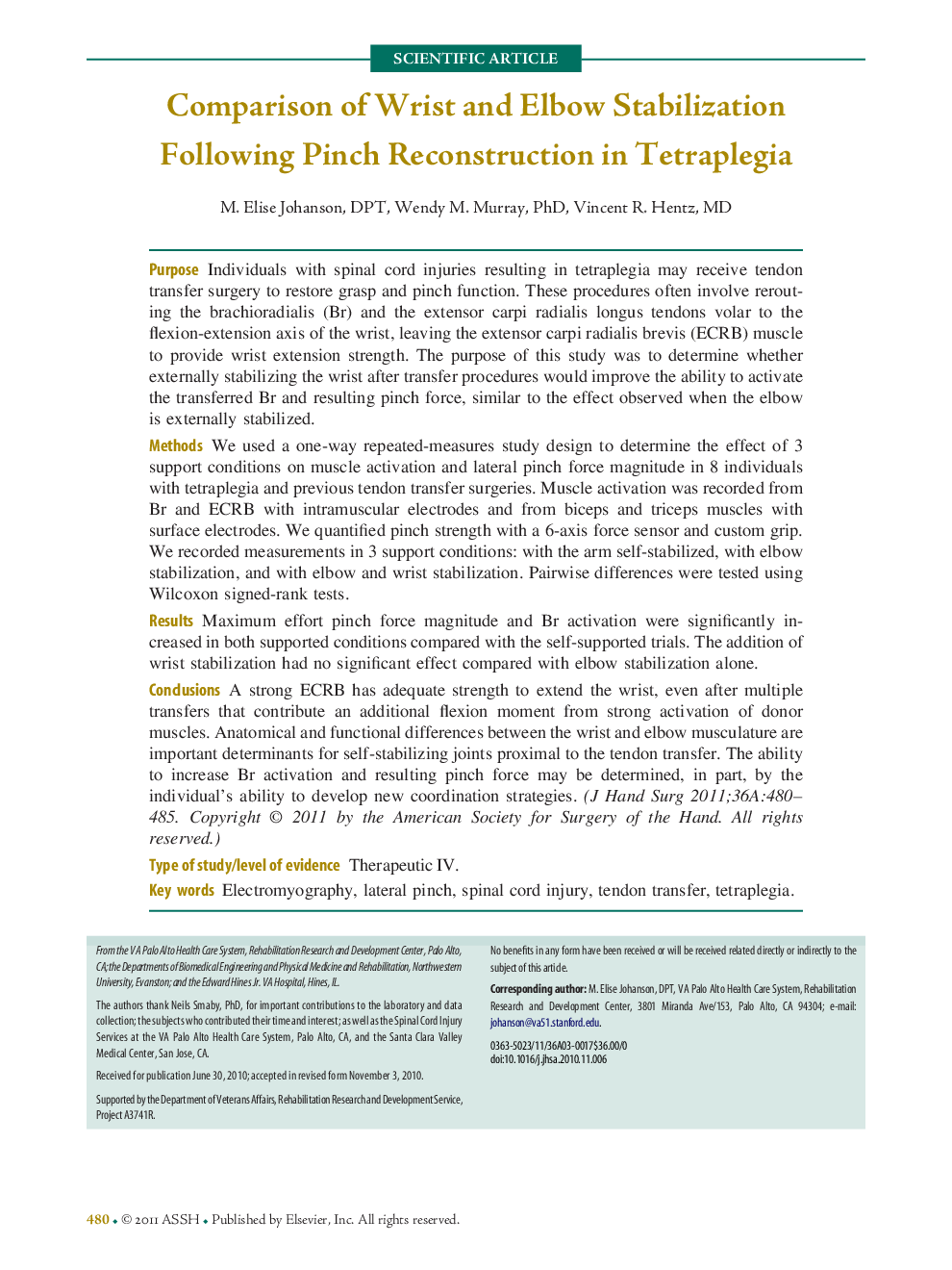| کد مقاله | کد نشریه | سال انتشار | مقاله انگلیسی | نسخه تمام متن |
|---|---|---|---|---|
| 4069733 | 1604411 | 2011 | 6 صفحه PDF | دانلود رایگان |

PurposeIndividuals with spinal cord injuries resulting in tetraplegia may receive tendon transfer surgery to restore grasp and pinch function. These procedures often involve rerouting the brachioradialis (Br) and the extensor carpi radialis longus tendons volar to the flexion-extension axis of the wrist, leaving the extensor carpi radialis brevis (ECRB) muscle to provide wrist extension strength. The purpose of this study was to determine whether externally stabilizing the wrist after transfer procedures would improve the ability to activate the transferred Br and resulting pinch force, similar to the effect observed when the elbow is externally stabilized.MethodsWe used a one-way repeated-measures study design to determine the effect of 3 support conditions on muscle activation and lateral pinch force magnitude in 8 individuals with tetraplegia and previous tendon transfer surgeries. Muscle activation was recorded from Br and ECRB with intramuscular electrodes and from biceps and triceps muscles with surface electrodes. We quantified pinch strength with a 6-axis force sensor and custom grip. We recorded measurements in 3 support conditions: with the arm self-stabilized, with elbow stabilization, and with elbow and wrist stabilization. Pairwise differences were tested using Wilcoxon signed-rank tests.ResultsMaximum effort pinch force magnitude and Br activation were significantly increased in both supported conditions compared with the self-supported trials. The addition of wrist stabilization had no significant effect compared with elbow stabilization alone.ConclusionsA strong ECRB has adequate strength to extend the wrist, even after multiple transfers that contribute an additional flexion moment from strong activation of donor muscles. Anatomical and functional differences between the wrist and elbow musculature are important determinants for self-stabilizing joints proximal to the tendon transfer. The ability to increase Br activation and resulting pinch force may be determined, in part, by the individual's ability to develop new coordination strategies.Type of study/level of evidenceTherapeutic IV.
Journal: The Journal of Hand Surgery - Volume 36, Issue 3, March 2011, Pages 480–485